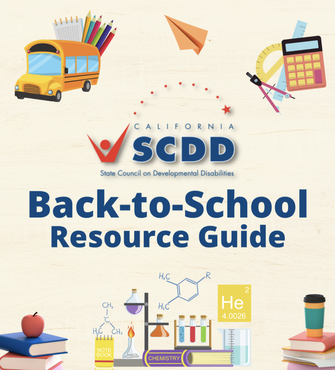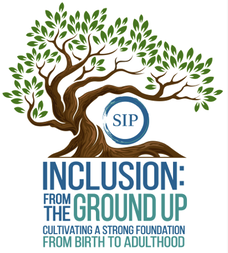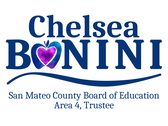|
What an absolute honor to be highlighted in the current version of the California School Boards Association's Quarterly Publication!In all places, I continue to address issues that will help families and students to NOT have the same traumatic experiences that our family had as we sought inclusive access to education in our schools.💜
#ForKids #Inclusion #Accountability #Opportunity #EveryDay Article: https://publications.csba.org/issue/summer-2023/embracing-students-with-disabilities/
0 Comments
Reposted from the California State Council on Developmental Disabilities (SCDD)
EDUCATION & GENERAL RESOURCES:California Parent Organizations https://www.cde.ca.gov/sp/se/qa/caprntorg.asp Center for Parent Information & Resources https://www.parentcenterhub.org/ Community Resources & Public Benefits Individual Education Program (IEP) Strategy Guide Special Education Resources https://www.cde.ca.gov/sp/se/ Special Education Rights and Responsibilities (SERR) Manual https://serr.disabilityrightsca.org/ Requesting Compensatory Education Services After Distance LearningSAFETY, HEALTH & WELLNESS: Active Shooter Guide for People with Disabilities Back-to-School Mental Health Resources https://www.chhs.ca.gov/back-to-school-resources/ Bullying Bullying & Hate-Motivated Behavior Prevention https://www.cde.ca.gov/ls/ss/se/bullyingprev.asp California immunization laws and required vaccinations for student TK – 12thGrade https://www.cdph.ca.gov/Programs/CID/DCDC/Pages/Immunization/School/shotsforschool.aspx For help finding a place to get needed immunizations: Local Health Department Immunization Program Contact Information https://www.cdph.ca.gov/Programs/CID/DCDC/Pages/Immunization/Local-Health-Department.aspx COVID-19 Resources https://schools.covid19.ca.gov/ Medi-Cal Health Coverage for Children: Children may enroll in Medi-Cal year-round, and immigration status does not matter. Medi-Cal provides free or low-cost pediatric services, including dental, vision, and behavioral health care, to children in need from families with limited income and resources. Individuals may apply for Medi-Cal in person, by mail, by phone, or online. For more information please visit, Ways to Apply for Medi-Cal: https://www.dhcs.ca.gov/services/medi-cal/Pages/ApplyforMedi-Cal.aspx. Monkey Pox Resources
You can now find the 2nd Annual Virtual Inclusion Conference videos on the Supporting Inclusive Practices website! Enjoy!✨
There are many opportunities for youth to lead in San Mateo County!
Schools and families have a mutual interest in ensuring that all students have access to their education, and although the relationship can often be adversarial, it does not have to be. This workshop, hosted by the Placer County SELPA's Community Advisory Committee (CAC), is an excellent opportunity to learn more about how to effectively navigate the complex special education system to ensure better outcomes for students.
Register HERE. In response to the increased risk of opioid overdoses on school campuses, the San Mateo County Coalition for Safe Schools and Communities developed the Naloxone for Schools Program and Toolkit. Naloxone hydrochloride (naloxone) is a safe and effective way to reverse and opioid overdose. The Food and Drug Administration approved naloxone to treat overdoses in 1971, and paramedics and hospitals have been using it to successfully reverse opioid overdoses for decades.
The Naloxone for Schools Program, along with its accompanying toolkit, provides schools with the information they need to identify and respond to an opioid overdose on campus, training on how to use naloxone (also known by the product name Narcan), access to naloxone, and supporting documents and communication tools. The Naloxone for Schools Program is intended to supplement district and school drug awareness and education programs. The Coalition’s program is unique in the state because it facilitates schools’ access to naloxone and related support as a countywide protocol. While the State’s Naloxone Distribution Project requires districts and charter and private schools to complete training and apply individually for naloxone from the State, the San Mateo County program streamlines the application, training, and reporting process for districts and schools through the County Office of Education and provides support and coordination. Naloxone currently requires a prescription, which the San Mateo County Office of Education has obtained through a Statewide Standing Order for schools and districts participating in the program. The San Mateo County Office of Education, which administers the program for the Coalition for Safe Schools and Communities, is able to get product out quickly to districts, answer questions, and provide staff training. All of San Mateo County’s school districts, including the County Office of Education, are participating in the Naloxone for Schools Program. Approximately, two-thirds have already completed the training and onboarding and have received a distribution of naloxone from the County Office of Education. The San Mateo County Board of Education updated its Board Policy 5141, Administering Medication and Monitoring Health Conditions, to enable the use of naloxone on SMCOE school sites: The Superintendent or designee shall make naloxone hydrochloride or another opioid antagonist available for emergency medical aid to any person suffering, or reasonably believed to be suffering, from an opioid overdose. The Naloxone for Schools Toolkit recommends that school districts adopt a board policy addressing the administration of naloxone and includes a sample template. Legislators are currently looking at requiring schools to maintain doses of naloxone on campus (e.g. SB 234). The San Mateo County Office of Education will continue to support districts through training, oversight and reporting, and reordering and restocking. State Superintendent Tony Thurmond Announces Programs to Tackle Disproportionate Discipline in Schools
Excerpts from Press Release: "Superintendent Thurmond has long championed programs to help reduce disproportionate school discipline, starting with his authorship (while in the Assembly) of Assembly Bill (AB) 1014 (Ch. 397, Stats. 2016) which, as of this year, will have resulted in $140.8 million in Proposition 47 grants being moved from the criminal justice system to school prevention grants to help schools reduce suspensions and chronic absenteeism. In 2022, Superintendent Thurmond co-sponsored AB 2806 (Ch. 915, Stats. 2022) by Assemblymember Blanca Rubio (D-Baldwin Park) to ban expulsion of preschool students, which was signed into law by Governor Gavin Newsom. Superintendent Thurmond is also sponsoring Senate Bill 274 by Senator Nancy Skinner (D-Berkeley), which will ban suspensions for willful defiance. “We have to educate our kids—not incarcerate them—and provide them with opportunities for learning and to succeed,” Thurmond said. “Taking students out of learning time through suspensions and expulsions is proven to push them toward the criminal justice system. School districts trying to hide actual discipline rates through practices such as masking expulsions as transfers will not be tolerated.” Amid reports that some districts have pushed families toward voluntary or involuntary transfer to avoid reporting expulsions, Superintendent Thurmond and the California Department of Education (CDE) are establishing a tip line. This can be used by school staff, parents, students, or community members to report any district involved in practices to mask the use and reporting of discipline or to report disciplinary practices that violate California Education Code, and the CDE will look into these matters." *** As a member of the County Board of Education, I have heard from a number of Board Trustees in our local districts that they are primarily implementing "administrative expulsions," in their districts, to avoid the "official" expulsion process. According to this new guidance and initiative from the CDE, we may need to look closer at this data (which is not reported in the same way) to reveal the impact of these practices on student outcomes and the well-intentioned efforts to halt the "school to prison pipeline." Find the CDE's 2/15/23 Press release at: https://www.cde.ca.gov/nr/ne/yr23/yr23rel12.asp Knowing what resources are available for kids to have access to their education is very important. This article from the Learning Disabilities Association of America is very helpful. And when in doubt of what to do, ask your teacher, principal or contact your SELPA.
I want to invite you to share your family or professional story or experience with Dyslexia, Dysgraphia, and/or Dyscalculia to help me better understand how we can better meet the needs of students and our community in regard to these learning disabilities.
Following the release of the California Dyslexia Guidelines in 2017 and the creation of the CA Dyslexia Initiative (spearheaded by the Sacramento County Office of Education), I was hopeful for progress on this issue. I believe that some good work is being done in San Mateo County (and beyond), but I think that we would benefit from a coordinated effort to ensure that ALL students with Dyslexia, Dysgraphia, and/or Dyscalculia have access to screening and learning supports. Thank you for participating in this SURVEY so that we may learn together! A spot-on Open Letter & Call to Action from NCLD.org. ”We need to talk about mental illness for what it is: a disability. A disability that deserves the same support and focus as dyslexia, ADHD, and other learning disabilities.” #ForKids
|
Archives
August 2023
Categories |
|
Working Every Day to Create Opportunity, Inclusion & Accountability in San Mateo County Schools |
Copyright © 2021











 RSS Feed
RSS Feed
